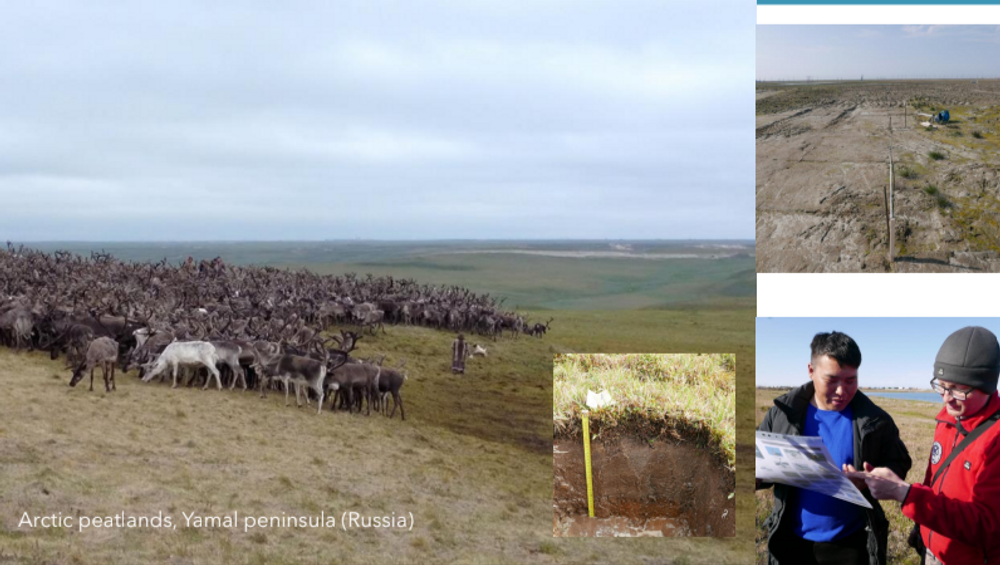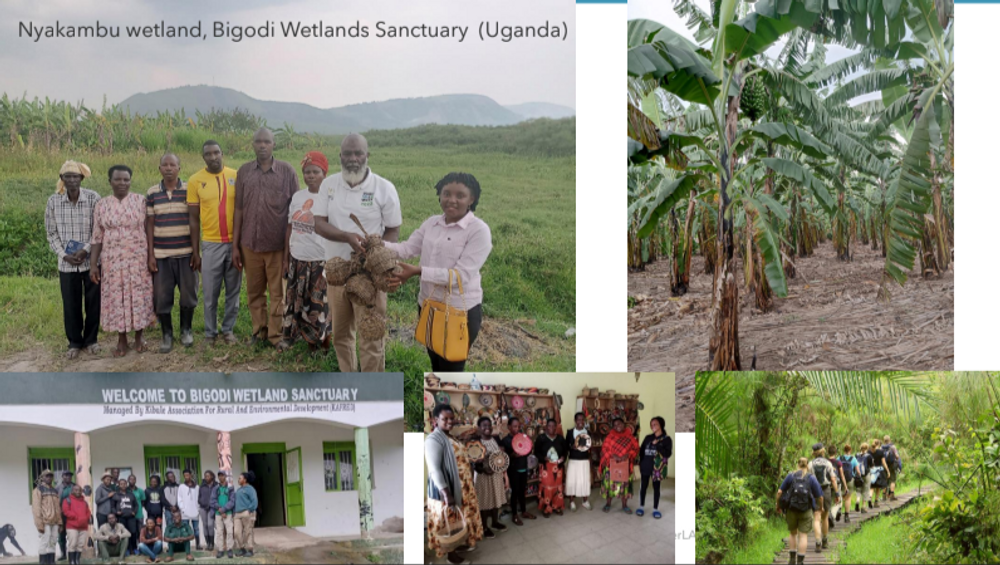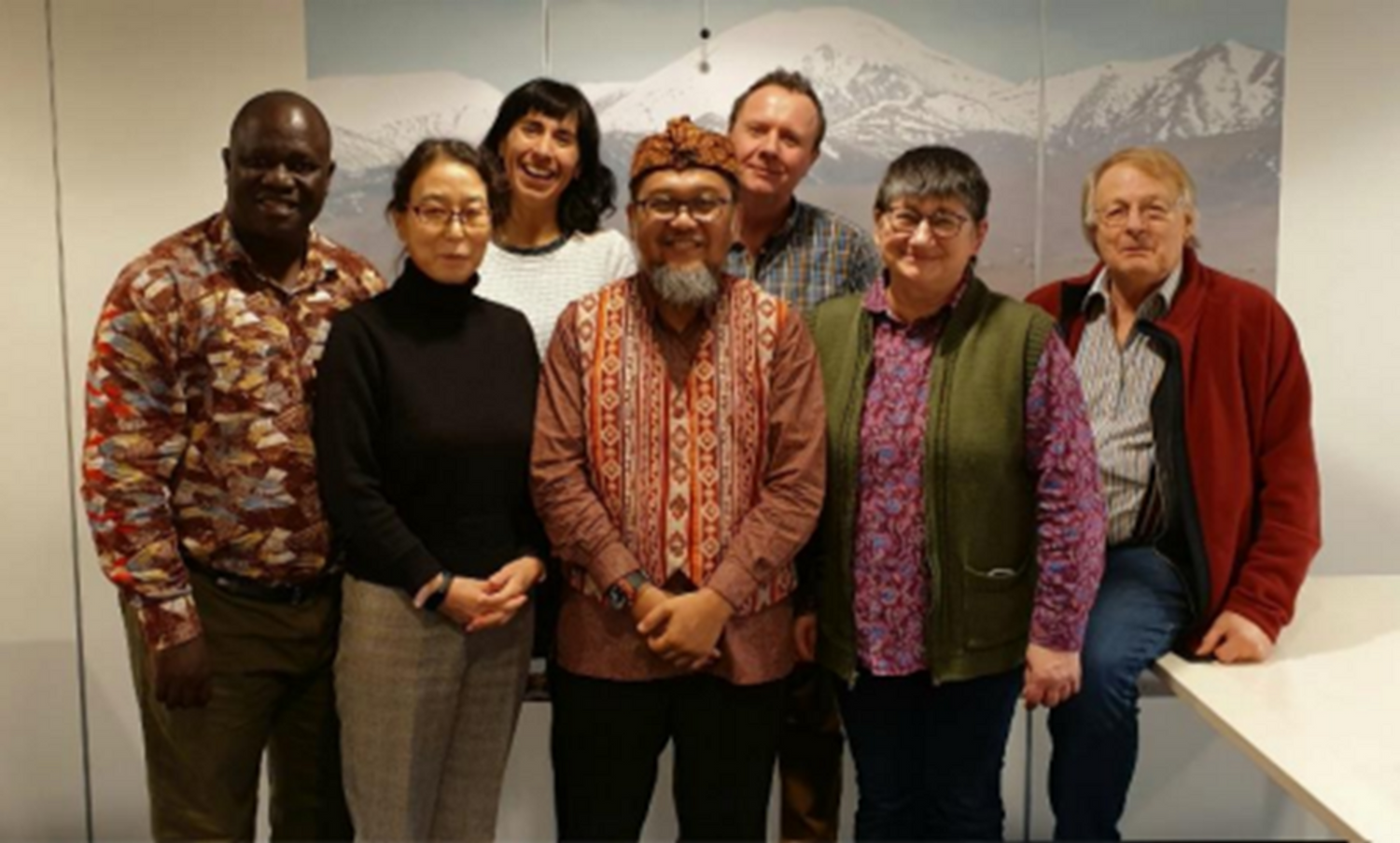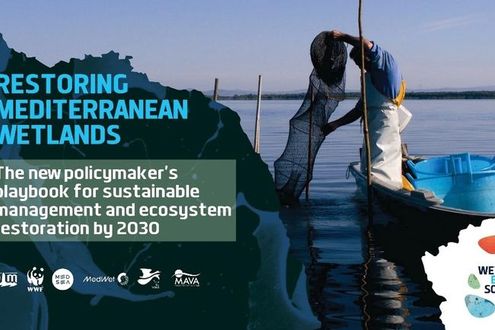Header image: The Wetlands International team brought together experts from Russia, China, Indonesia, Uganda and Mongolia to discuss barriers and best-practices in community-based wetland restoration.
Wetlands International recently held a workshop to enable international knowledge transfer relating to wetland restoration as part of the WaterLANDS project. Wetlands International leads the WaterLANDS Work Package 5: Co-creating Best Practice.
The workshop explored learnings from the Global South by identifying community-based wetland restoration projects with business models that facilitate and promote peatland and wetland restoration.
The restoration projects featured in the workshop were set against varying backdrops including Arctic peatlands in the Yamal peninsula in Russia, Khashaat Soum in Mongolia, Bigodi Wetlands Sanctuary in the Nyakambu wetland in Uganda, and the Ruoergai Plateau in China. The areas experienced different issues including peat erosion, overgrazing, and conflict between restoration and agriculture.

In the Arctic region of the Yamal peninsula in Russia, land degradation and erosion had resulted from the impacts of extractive industries. A restoration project was financed by the industrial company which responsible for the rehabilitation of the degraded land and was conducted in consultation with the indigenous people.

In the Nyakambu wetland system in Uganda, a major problem has been the degradation of wetland due to conversion for agriculture. The wetland is a source of water for a large population. The starting point for action was establishing a revolving community fund for micro-credits for short term livelihoods improvement, with the aim to achieve long-term environmental benefits.
A key issue across regions was their increasing susceptibility to fires and floods due to wetland degradation, which affected the liveability of the areas for local communities.
A key theme of the workshop was:
How can we balance restoration needs with the expectations of local communities and their livelihood needs?
The workshop found that although the projects were located in diverse regions and cultural contexts, they were experiencing common bottlenecks and problems, which were also similar to issues experienced in wetland restoration projects in Europe.
Barriers to restoration included competing interests of stakeholders, lack of coordination between different administrative levels, lack of sufficient and long-term funding, and that local people either did not benefit from the restoration, or they did not understand how they benefitted.
Community-based projects are central to tackling these barriers. Co-creation of restoration with communities is essential for sustainable restoration of landscapes, and is a central pillar of the WaterLANDS project.
Successful methods of community-based co-creation include funding mechanisms that steer capital directly to community groups, and the bio-rights approach, which is an innovative funding mechanism that involves and empowers communities to protect the environment by providing conditional loans which can turn into a grant if conservation is successful.
Different short-term and long-term factors were identified as critical to success.
In the short-term, success is achieved through attracting members to projects by building acceptance and trust through consultation, capacity building and sharing concrete results.
In the long-term, goals include layering finance through developing various income streams to avoid over-reliance on donors or on one income type such as tourism.
Transparency, adaptive support for land users and process-based management are required.
To upscale restoration models, government-facilitated roll-out is needed to support cooperation and connect on the national level. Restoration must be supported by policy and embedded in law to ensure long-term delivery.
Upscaling of alternative livelihood options can be achieved through capacity building in technical and soft skills, and by adopting mechanisms that directly benefit communities. Projects should help to create the conditions for prosperous and sustainable livelihoods but should not determine it in the long run.


